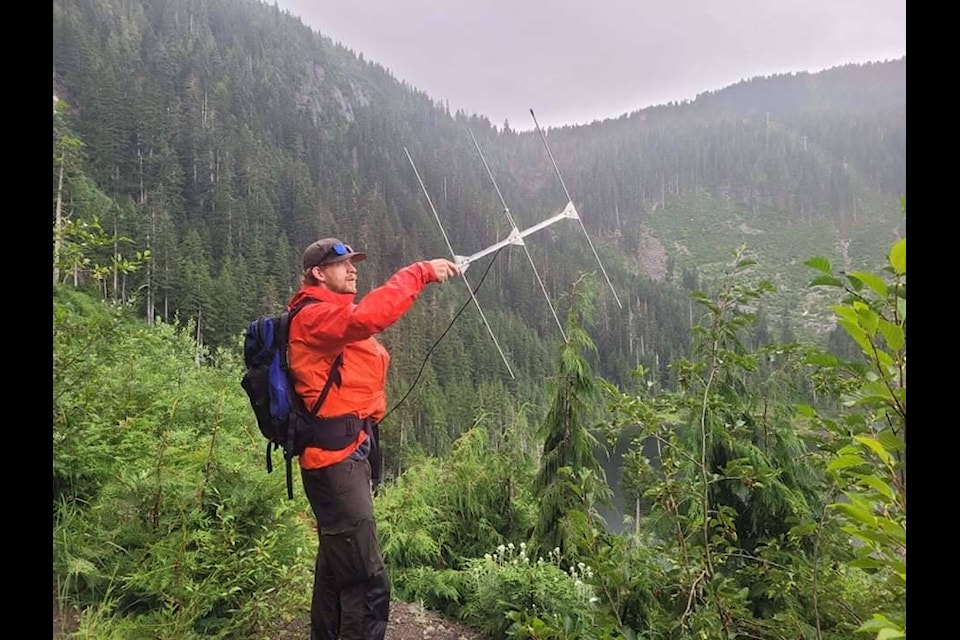Three new populations of Vancouver Island marmot have been identified by researchers this summer — an encouraging development for a species on the brink of extinction.
The Vancouver Island marmot is a medium-sized, burrowing rodent that lives in colonies within sub-alpine habitats. With an estimated population of just over 200 individuals, it is considered one of the rarest mammals on the planet, and as such, is a federally-protected species at risk.
Heading into the summer, there were between 24 to 28 known colonies of the species, said Adam Taylor, executive director of the Nanaimo-based Vancouver Island Marmot Recovery Foundation. This range is given because while some colonies are large and well-established, others come in and out of existence as they are repeatedly colonized and abandoned over time.
“Some colonies are very small and very precarious,” said Taylor. “That certainly describes many in Strathcona Park in particular, where it has been — to be blunt — a real struggle to reestablish the species.”
One of the main efforts of the foundation is to expand the marmot population by releasing captive-bred individuals into the wild. But information on wild colonies — such as population, sex ratio and age structure — is needed to know where to release marmots.
Each summer, a team of field technicians heads into the mountains to collect this data, by tracking marmots using radiotelemetry, observing colonies and setting up trail cameras. Normally crews are transported to higher elevations by helicopter, but this summer, aircraft were occupied fighting wildfires on the mainland.
That did not stop a team of technicians, including alpine aficionado Kevin Gourlay, from setting off on a five-day trip into the middle of Strathcona Provincial Park, however.
“We were really hoping to get into this remote site that hadn’t been surveyed for several years,” said Gourlay. “So we said, ‘we’ll just hike it.’”
Doing so was no small feat. Besides needing to carry the typical gear for surviving a five-day backpacking trip, the team also had to lug all the necessary materials for studying marmots, which Gourlay calls “marmoteering.”
On the last morning of the five-day trip, Gourlay decided to investigate a new area with the potential to support marmots.
“It hadn’t really been surveyed before, but it looked very marmot-ey,” he said. “I just had a hunch that there might be something over there.”
Following his instincts, Gourlay hiked into the area — and struck the marmot mother-lode.
“All of a sudden I see a bunch of little heads poking out of the ground and a quite extensive burrow system with lots of entrances, and there were a quite a number of pups there,” he said.
After climbing to an outcrop above, he then heard the high-pitched warning call of a marmot, known as a whistle.
“One of the marmots whistled, then there were marmots running in every direction to get back into their burrows,” he said. “It was quite a unique experience because it’s very uncommon to see so many Vancouver Island marmots at a time.”
The discovery is a positive sign for the species’ recovery, as it shows individuals from the larger colonies are moving to new habitats and colonizing them, said Taylor.
“This has been something we’ve been waiting for and hoping to see for a long time — that the marmots are successful enough in the colonies that we’ve re-established; that those ‘dispersers’ are going out, and they’re finding natural habitat, setting up shop there, and being successful enough to actually have pups,” he said.
“We had hoped to find a new colony, but I have to admit, our expectations were pretty low coming into the field season that we would actually find something like that.”
Two other colonies were discovered this summer, with the help of tips from the public. Tips, such as locations or photographs of individuals or their sign (e.g. burrows), can be reported through the foundation’s website.
“We get reports of marmots from hikers fairly regularly, and they are incredibly helpful, because it’s hard for us to spend lots of time at these colonies,” said Taylor. “Usually, they tell us a bit more about what’s going on, especially in some of these colonies that we have a hard time getting to.”
Summer can be a batty time as young start to roam, says B.C. biologist
sean.feagan@campbellrivermirror.com
Like us on Facebook and follow us on Twitter
